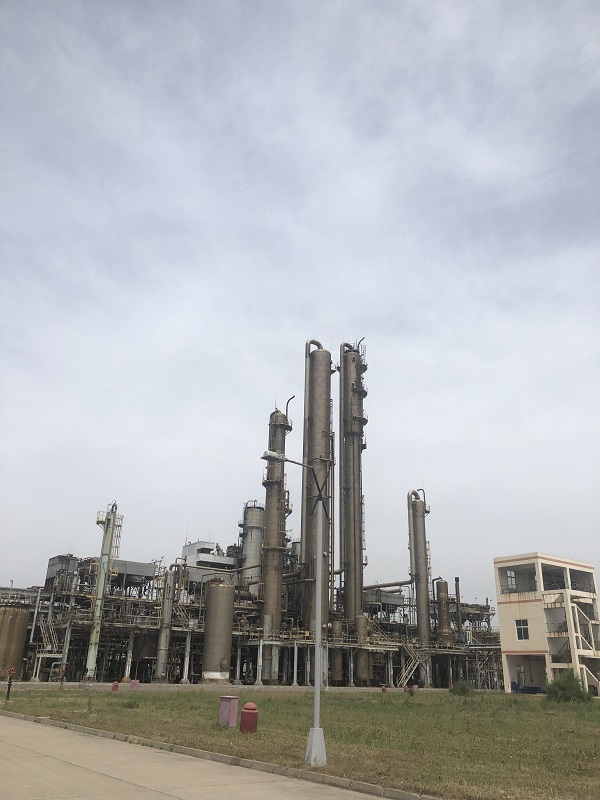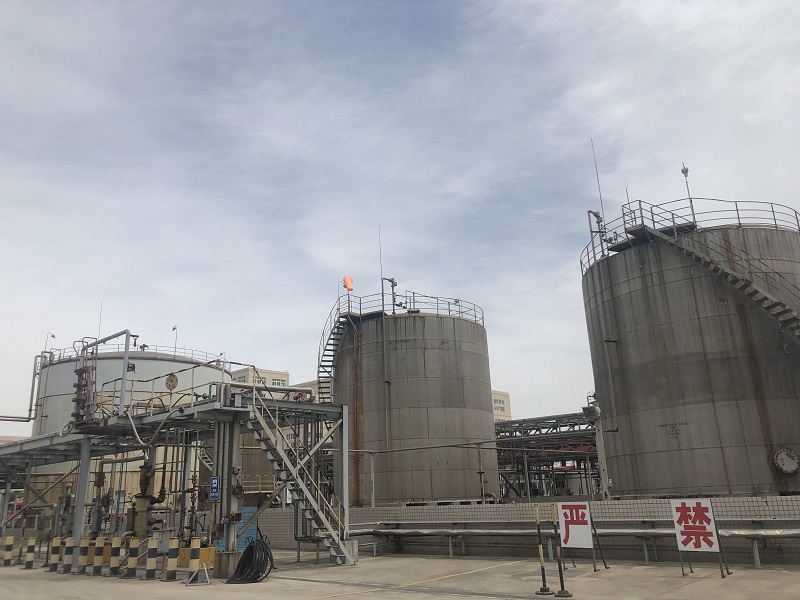Clinical use
Ibuprofen is a non-steroidal anti-inflammatory drug, its anti-inflammatory, analgesic and antipyretic effects are 16 to 32 times stronger than aspirin. Ibuprofen is suitable for the treatment of rheumatoid arthritis, rheumatoid arthritis, osteoarthritis, ankylosing spondylitis, neuritis, pharyngitis and bronchitis.
Executive standard
Implement current USP, EP, BP, CP standards and customer specific standards.
Specification packaging form
15kg, 25kg, 80kg, 100kg/cardboard drum
2019-11-19
Clinical use
Aspirin has the effects of salicylic acid analgesia, anti-inflammatory, antipyretic, anti-rheumatic and platelet aggregation. It can be used in the following situations: a. Analgesia and antipyretic. b. Anti-inflammatory, anti-rheumatic. c. Arthritis. d. Antithrombotic.
Executive standard
CP, BP, EP, USP
Specification packaging form
25kg/composite woven bag; 25kg, 50kg, 100kg/cardboard drum; 800kg, 1000kg/bag, woven bag
2019-11-06
Clinical use
Glimemide is a sulfonylurea oral hypoglycemic agent whose main mechanism of hypoglycemic action is to stimulate insulin for type II (non-islet dependent) diabetes. It is a new generation (third generation) sulfonylurea oral hypoglycemic agent.
Executive standard
Cp, usp
Specification packaging form
Bulk packaging cardboard drum
2019-10-23
Clinical use
Meloxicam is a non-steroidal anti-inflammatory drug of enolic acid, which is suitable for the treatment of painful osteoarthritis (arthritic degenerative osteoarthrosis) for the symptoms of rheumatoid arthritis (antipyretic and analgesic, Anti-inflammatory, rheumatoid)
Executive standard
CP/ BP
Specification packaging form
20kg/cardboard barrel
2019-10-15
Clinical use
Adrenal corticosteroids have effects on glucose metabolism, anti-inflammatory, anti-allergic, anti-toxic, etc., and are mainly used as an alternative treatment for adrenal insufficiency.
Executive standard
USP, BP, EP, CP and customer standards
Specification packaging form
5kg/barrel, 10kg/barrel, 25kg/barrel cardboard drum
2019-10-08
Hydrates and their derivatives are widely used in many industrial applications such as chemical products, pharmaceutical products, agrochemicals, water treatment, photographic and photographic products.
Hydrazine hydrate is used directly as:
1. Used as an anti-corrosion additive for circulating water in thermal power plants and nuclear power plants.
2. Oxygen scavengers in industrial boilers and high pressure steam furnaces. Hydrazine hydrate is a deoxidizer that decomposes dissolved oxygen in water and is used to further remove traces of dissolved oxygen remaining in the boiler feed water after thermal degassing. Since dissolved oxygen in the water can cause corrosion of the boiler tube wall, the addition of hydrazine hydrate in the boiler feed water can not only reduce, but also prevent the formation of iron scale and copper scale in the boiler.
Hydrazine hydrate is a highly effective reducing agent that can synthesize the following products:
1. A blowing agent: azoformamide (azocarbonamide) (for example, a sodium azide product for producing an inner tube).
2. The synthesis of biologically active intermediates in agrochemical products and pharmaceutical products begins with the production of triazole.
3. Azo initiator
4. Other various products: some organic pigment products in dyes, photographic reagents, urethane and acrylic products, and bronchocyanate products.
Hydrazine hydrate can also be used in the following areas:
1. Cleaning and refining of precious metals.
2. Acid wash and surface treatment liquid recover metal.
3. Disposal of waste liquid and waste gas.
4. Purification of refined sulfuric acid in the electronics market.
5. Metal inlay plastic and metal (nickel, cobalt, iron, chromium, etc.).
6. It is a prescription product for rocket fuel.
Used in actual production process, mainly used for mineral processing.
Since hydrazine hydrate has a bifunctional group and a nucleophilic group, various derivatives can be produced, for example:
1. Anti-corrosion products provide fast deoxidation and are effective at lower temperatures.
2, strontium salt: 3 kinds of products, mainly used in the synthesis of intermediates (especially in the pharmaceutical industry).
three. Triazole products: 1,2,4-triazole/1,2,4-triazole sodium salt/4-amino-1,2,4-triazole/3-amino-1,2,4-triazole .
4. Aminoguanosine bicarbonate.
5. A new type of polymer initiator, such as a liquid azo compound produced by the company.
2019-05-31
Only by correctly understanding and mastering the causes of compound fertilizer agglomeration can appropriate measures be taken to prevent fertilizer agglomeration. After observing and studying the surface of the particles by electron microscopy and X-ray diffraction, crystal bridging theory and capillary adsorption theory are generally accepted.
1) Crystal bridge theory
According to Crystal Bridge Theory, due to its own changes (crystal characteristics, chemical composition, particle size, particle size distribution, crystal geometry) and external conditions (humidity, temperature and pressure), moisture continuously diffuses from the inside to the surface (or Due to surface moisture absorption), the surface of the particles dissolves and recrystallizes, forming a crystal bridge at the interstices of the particles. Over time, the crystal bridges combine to form large clumps.
(2) Capillary adsorption theory
The theory holds that the hygroscopic fertilizer is at its critical relative humidity (also known as the hygroscopic point, referred to as crh) and uses it to indicate the hygroscopicity of the fertilizer. That is, at a certain temperature, when the fertilizer loses moisture, it begins to absorb moisture into the air or air. In relative humidity. It absorbs the water above and forms a saturated solution film of the fertilizer on the surface of the crystal. The membrane of this solution accelerates the adsorption of the capillary. The saturated vapor pressure of the capillary surface water is lower than the external saturated vapor pressure. External water vapor diffuses between the particles, absorbing moisture and deliquescent. The concave surface formed by the surface tension causes ions to move toward the particles. Move to the point of contact so that adjacent particles form and combine into clusters.
Crystal bridge theory and capillary adsorption theory can explain the agglomeration of many inorganic compounds. They all think that the reason for the agglomeration of the fertilizer is that the surface dissolves and recrystallizes, so that the fine particles combine into clusters.
2019-05-31
(3) Chemical reaction theory
The theory holds that chemical fertilizers are less likely to react completely during the granulation process, but will continue to react to form double salts during storage, leading to recrystallization and agglomeration. These reactions are accompanied by exothermic and release of water, which causes a change in the composition of the double salt, resulting in a change in the volume of the particles, resulting in cracking and agglomeration of the product.
Through the study of agglomeration of high-concentration compound fertilizer, the theory of plastic deformation is formed.
(4) Plastic deformation theory
According to this theory, agglomeration is accompanied by deformation, and compression will increase the deformation. The residual heat of the fertilizer that is not completely cooled will be transferred outward from the center of the particle. If the fertilizer particles are squeezed, deformation and agglomeration will result.
(5) Diffusion agglomeration theory
The above mechanism is relatively mature, but some scholars in the former Soviet Union proposed a completely different agglomeration theory - the mechanism of diffusion agglomeration. The mechanism of diffusion agglomeration is considered to be that the agglomeration of the inorganic compound depends on the shape of the particle or the pore structure formed by the accumulation of the particles. Ions of inorganic substances self-diffuse through these channels and some physical or chemical action occurs on the surface of the particles to form agglomeration.
2019-05-31
The hydrazine hydrate urea production method first dissolves urea in water to form a urea solution, and reacts with sodium hypochlorite and caustic soda in a tubular oxidation reactor in the presence of magnesium sulfate to obtain a crude ruthenium, that is, an oxidizing solution having urea. The cerium content exceeds 2%. . Since the crude oil contains a large amount of impurities such as sodium chloride, sodium carbonate and sodium hydroxide, the crude is removed by vacuum distillation through a five-layer tank, and an aqueous solution containing more than 6% of lanthanum is obtained by a fractionator. Further concentration by evaporator to obtain 40% hydrazine hydrate.
The urea process is mature and easy to master, but has many side effects. It must maintain a very low bismuth concentration (typically 2% to 3%), so a large amount of by-products need to be disposed of, and the evaporated hydrazine hydrate needs to consume a large amount of heat. To this end, the production process of the hydrazine hydrate urea method has been improved: the production of sodium hypochlorite in the packed absorption tower; the use of a tubular heating reactor instead of the tank reactor to synthesize hydrazine hydrate, which is beneficial to increase the yield; Replace the five-layer evaporator. US evaporation; replacing the liquid inlet column with a gas inlet column to increase the concentration and reduce steam consumption; cooling the hydrated crude solution. However, sodium carbonate decahydrate was recovered, and sodium chloride by-products were recovered, which reduced production costs and improved the quality and stability of hydrazine hydrate.
2019-05-31
Direct application of hydrazine hydrate
1. Used as an anti-corrosion additive for circulating water in thermal power plants and nuclear power plants;
(2) Deoxidation and decarburization cleaning agent for boiler and reactor. Hydrazine hydrate is a deoxidizer that reduces dissolved oxygen in water and is used to further remove dissolved oxygen remaining in boiler feed water after thermal deoxidation. Since dissolved oxygen in the feed water can cause corrosion of the boiler tube wall, the addition of hydrazine hydrate to the boiler feed water can not only deoxidize, but also prevent the formation of iron and copper scale in the boiler.
2. Synthetic chemical raw materials
1. Blowing agent: azoformamide (ac), azocarbonic acid amide, sodium azide, sulfonium tosylate, d1pa, tsh, etc.;
2. Herbicides, plant growth regulators and bactericidal, insecticidal and rodenticides in pesticide products: plant growth regulator maleic hydrazide derivatives, rodenticide dibenzoyl hydrazide, insecticidal nail bactericide pyrazole derivatives , 5-nitrofuran semicarbazone, herbicide aminotriazole, etc.;
3. Pharmaceutical products against tuberculosis and antidiabetic drugs: isoniazid, phenylthiosemicarbazide and benzenesulfonylthiourea, antipsychotic drug 1-isonicotinic acid-2-isopropion hydrazide, anticancer drug aldehyde hydrazide derivative, Anti-infective drug 5-nitrofuroyl hydrazide derivative, antibiotic oxazoline cephalosporin, diuretic antihypertensive drug hydrazide benzoxazine, antitumor drug methyl benzoquinone.
4. Novel polymer initiators, such as liquid azo compound products;
three. Hydrazine hydrate is widely used in the following areas:
1. Separation and manufacture of high-purity metals, synthetic fibers and rare elements, cleaning and refining of precious metals;
2. Recovering metals from pickling solutions and surface treatments;
3. Dispose of waste liquid and waste gas;
4. Purification of refined sulfuric acid in the electronic market;
5. Metal inlays of plastics and metals (nickel, cobalt, iron, chromium, etc.);
(5) Formulation products of rocket fuel and explosives, diazo fuel, and rubber additives;
7, used in the actual process, mainly used for gold ore beneficiation;
8. Used as a reducing agent, antioxidant, etc., for photography, photographic products, etc.;
9, as an analytical reagent
4. A derivative product used in the production of hydrazine hydrate:
1, LIOZAN: anti-corrosion products, can provide fast degassing ability, and can be effective at lower temperatures;
(2) strontium salt: three kinds of products, mainly used in the synthesis of intermediates, especially the pharmaceutical industry;
3. Triazole products: 1,2,4-triazole/1,2,4-triazole sodium salt/4-amino-1,2,4-triazol/3-amino-1,2,4 - triazole, etc.;
2019-05-30






 Ms. Chloe Feng
Ms. Chloe Feng

